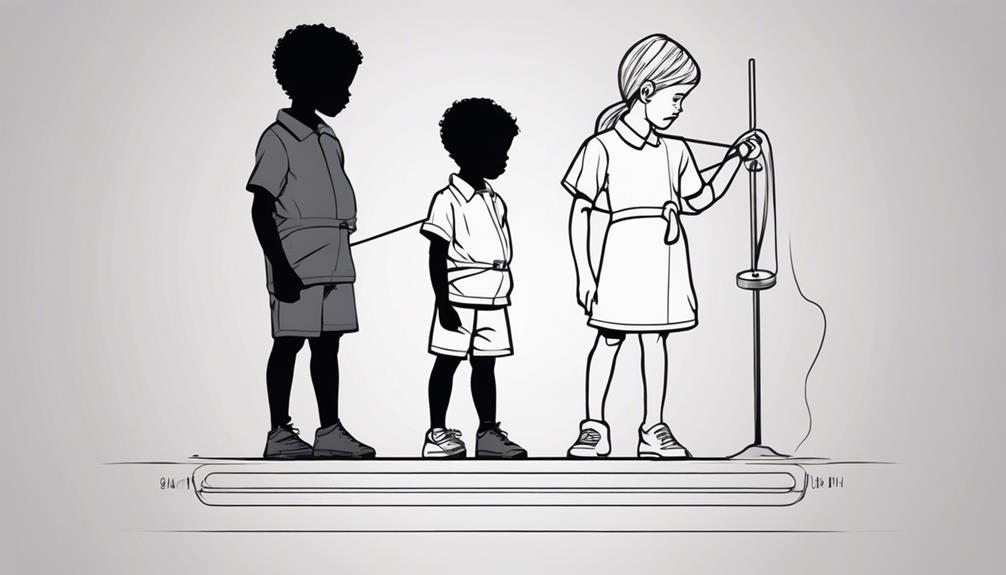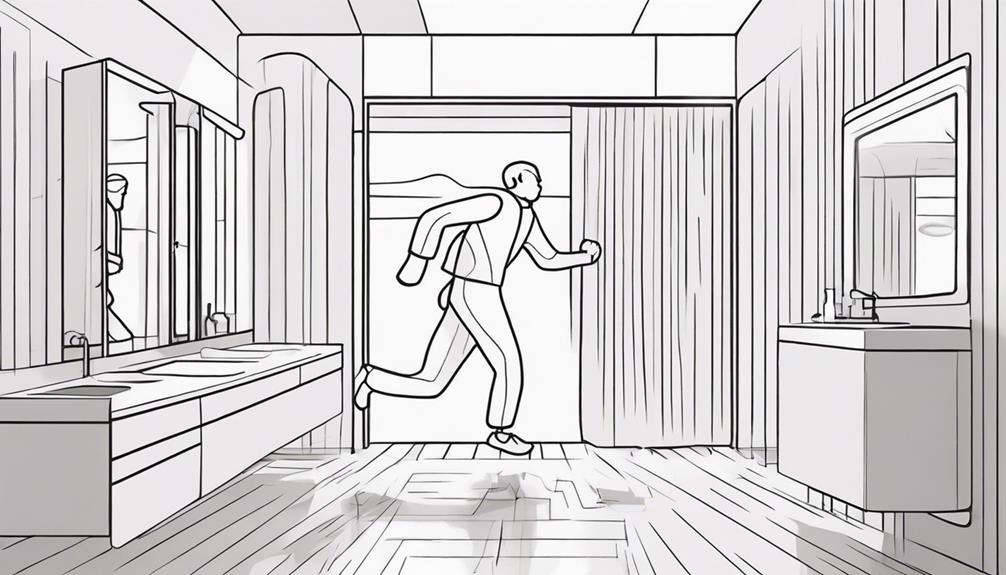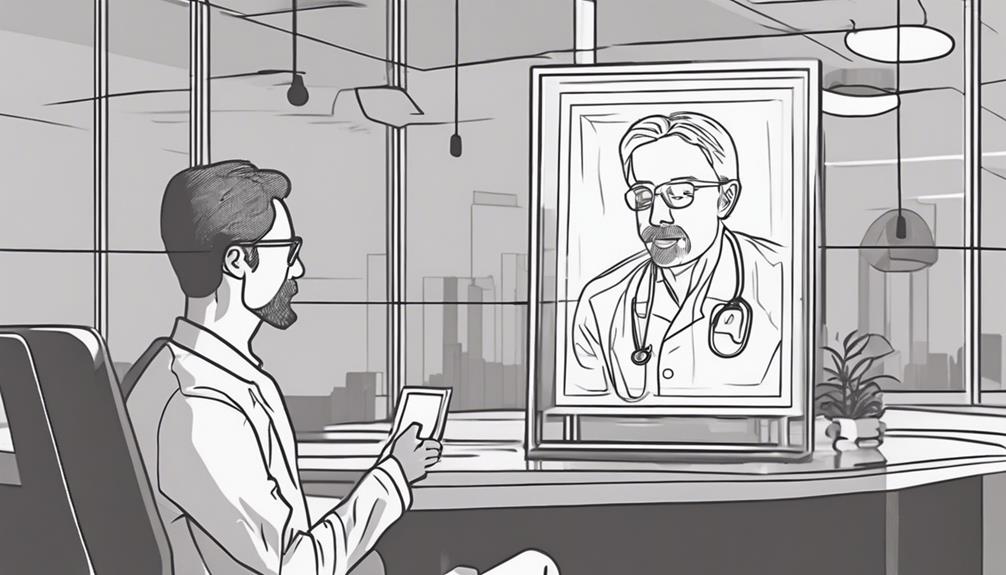When it comes to your health, the saying 'knowledge is power' holds true. Recognizing the early signs of type 1 diabetes can be crucial in managing the condition effectively.
From unexplained weight loss to constant thirst and fatigue, your body might be trying to tell you something important. Understanding these subtle clues can make a significant difference in your well-being.
But there are more signs to be aware of.
Key Takeaways
- Unexplained weight loss, excessive thirst, and blurred vision are key early signs of Type 1 diabetes.
- Timely consultation with a healthcare provider is crucial for diagnosis and symptom management.
- Monitoring symptoms like changes in appetite and energy levels aids in early detection and treatment.
- Hydration management, blood sugar monitoring, and eye health checks are vital for overall well-being with Type 1 diabetes.
Unexplained Weight Loss

If you're experiencing rapid and unexplained weight loss, it could be an early indicator of Type 1 Diabetes. When your body doesn't produce enough insulin, it starts burning fat and muscle for energy, leading to weight loss. This weight loss can happen even if you're eating more to compensate for increased hunger due to the lack of glucose entering your cells.
Appetite changes are common in individuals with Type 1 Diabetes. You may notice an increase in hunger despite eating more, as your body struggles to use the glucose effectively. On the other hand, some people may experience a decrease in appetite, leading to reduced food intake and subsequent weight loss.
Energy levels can also be affected by Type 1 Diabetes. Due to the lack of insulin to help glucose enter your cells for energy, you may feel fatigued and have low energy levels. This can impact your daily activities and overall quality of life.
If you're experiencing unexplained weight loss, changes in appetite, and low energy levels, it's essential to consult a healthcare provider for proper evaluation and diagnosis.
Excessive Thirst and Hunger
Experiencing excessive thirst and hunger may signal a potential onset of Type 1 Diabetes, further highlighting the intricate interplay of symptoms associated with this condition. Increased appetite, a common early sign of Type 1 Diabetes, occurs due to the body's inability to utilize glucose properly. When insulin is deficient, as is the case in Type 1 Diabetes, glucose can't enter cells for energy, leading to a sense of hunger despite adequate food intake. This increased appetite often accompanies unexplained weight loss, creating a paradoxical situation where one eats more but loses weight.
Dehydration is another significant consequence of Type 1 Diabetes. Excessive thirst, known as polydipsia, arises from the body's attempt to flush out excess sugar through increased urine production. As glucose accumulates in the bloodstream, the kidneys work overtime to eliminate it, causing frequent urination and subsequent fluid loss. This cycle of thirst, increased fluid intake, and frequent urination can lead to dehydration if not addressed promptly. Monitoring these symptoms alongside other signs of Type 1 Diabetes is crucial for early detection and management.
Frequent Urination

Frequent urination, a common symptom of Type 1 Diabetes, results from the body's attempt to eliminate excess glucose through increased urine production. When your blood sugar levels are high, the kidneys work to filter and remove the excess sugar from your blood, leading to more urine being produced. This can result in altered urinary frequency patterns, where you find yourself needing to urinate more frequently than usual, even during the night.
To manage urinary frequency associated with Type 1 Diabetes, hydration management is crucial. Proper hydration helps support kidney function and can aid in flushing out excess glucose from the body. Monitoring your fluid intake and ensuring you drink enough water throughout the day can help maintain hydration levels and support the kidneys in their function of regulating urine production.
If you notice significant changes in your urinary habits, especially in conjunction with other symptoms like excessive thirst and hunger, it's essential to consult a healthcare provider for evaluation and appropriate management.
Fatigue and Weakness
Transitioning from the urinary symptoms of Type 1 Diabetes, fatigue and weakness can manifest as early signs of the condition, indicating a potential need for further evaluation and management by a healthcare provider. Muscle aches and constant tiredness are often reported by individuals experiencing these symptoms. Muscle aches, which can be generalized or localized, may result from the body's cells not receiving adequate glucose due to insulin deficiency. This lack of glucose in the cells can lead to feelings of weakness and tiredness.
When experiencing fatigue and weakness, it's crucial to monitor for any other accompanying symptoms such as increased thirst or unintentional weight loss, as these can further indicate the presence of Type 1 Diabetes. If you notice persistent muscle aches, unexplained tiredness, or a general feeling of weakness, it's advisable to seek medical attention promptly.
Early detection and management of Type 1 Diabetes are essential to prevent complications and maintain overall health. Remember, your well-being is paramount, and addressing these symptoms promptly can lead to better health outcomes in the long run.
Blurred Vision

Blurred vision in the context of Type 1 Diabetes can indicate the need for immediate medical attention to assess and address potential complications related to the condition. Vision changes are common in individuals with uncontrolled diabetes due to fluctuations in blood sugar levels. High blood sugar levels can cause the lens in the eye to swell, leading to blurred vision. If left untreated, this can progress to more severe eye problems such as diabetic retinopathy, where the blood vessels in the retina are damaged.
Regular eye exams are crucial for individuals with Type 1 Diabetes to monitor their eye health and catch any issues early. If you experience sudden or persistent blurred vision, it's essential to consult with a healthcare provider promptly. Managing blood sugar levels through medication, diet, and lifestyle changes can help prevent further deterioration of vision and reduce the risk of long-term eye complications associated with diabetes. Remember, your vision is valuable, so prioritize your eye health in your diabetes management routine.
Frequently Asked Questions
What Are Some Common Misconceptions About Type 1 Diabetes and Its Symptoms?
You might believe that type 1 diabetes only affects children, but adults can also develop it. Symptoms like weight loss, extreme thirst, and fatigue are often misunderstood. Early detection and education can dispel these misconceptions.
How Can Family Members and Friends Support Someone Who Is Newly Diagnosed With Type 1 Diabetes?
You can offer valuable support by actively listening to their feelings and concerns, encouraging healthy habits, and researching together to better understand the condition. Your empathetic presence can greatly contribute to their emotional well-being.
Are There Any Preventative Measures That Can Help Reduce the Risk of Developing Type 1 Diabetes?
To reduce the risk of developing type 1 diabetes, focus on preventative strategies like maintaining a healthy weight through lifestyle modifications. Regular exercise, a balanced diet, and avoiding smoking can all play a role in lowering your chances.
What Are Some Potential Complications of Untreated or Poorly Managed Type 1 Diabetes?
Untreated or poorly managed type 1 diabetes can lead to potential complications such as cardiovascular disease, nerve damage, kidney problems, and vision issues. Long term effects include an increased risk of stroke and heart attacks.
How Does Type 1 Diabetes Differ From Type 2 Diabetes in Terms of Symptoms and Treatment Options?
In understanding Type 1 versus Type 2 diabetes, differences in symptoms and treatments emerge. Early detection is key. Type 1 often presents rapidly with severe symptoms, requiring insulin for treatment, while Type 2 may be managed initially with lifestyle changes and medications.
Conclusion
In conclusion, recognizing the early signs of type 1 diabetes is crucial for timely intervention. By staying alert to symptoms like unexplained weight loss, excessive thirst, and fatigue, individuals can seek medical attention promptly.
Remember, 'a stitch in time saves nine' when it comes to managing this condition effectively. Stay vigilant, listen to your body, and consult a healthcare professional if you suspect any warning signs of type 1 diabetes.
Early detection can make a significant difference in managing this chronic disease.